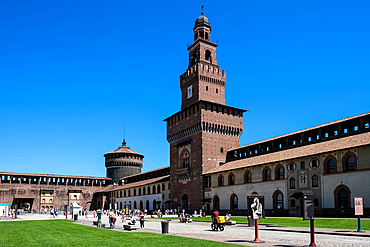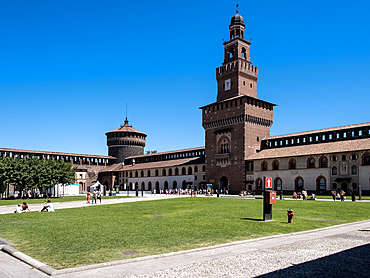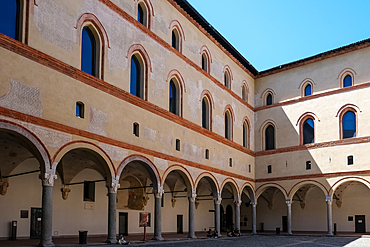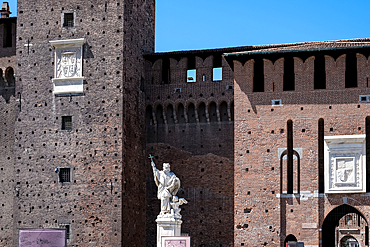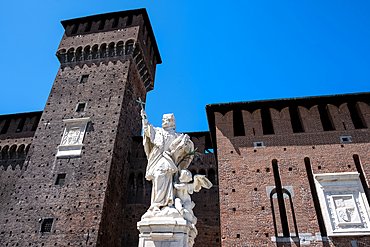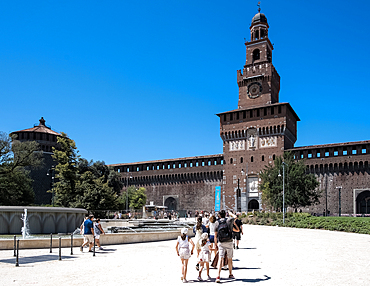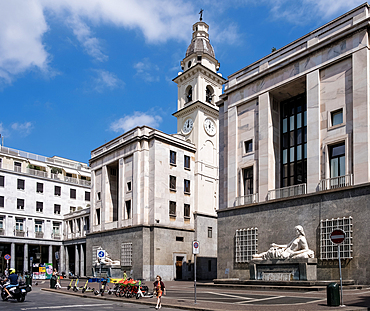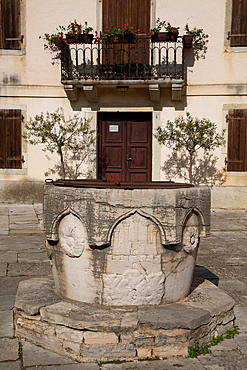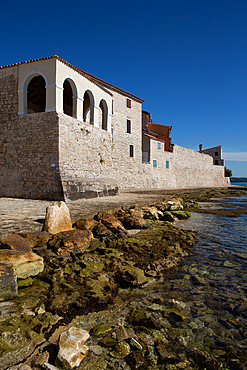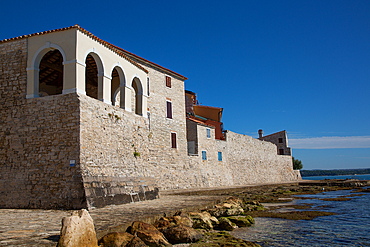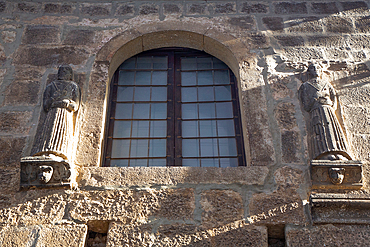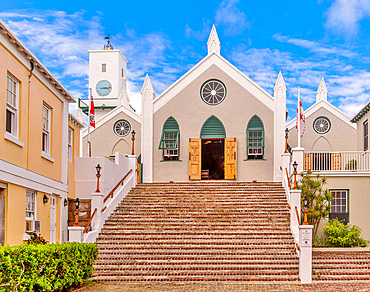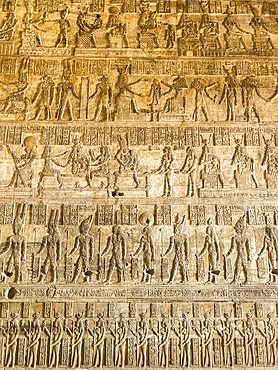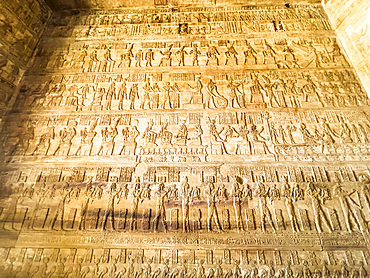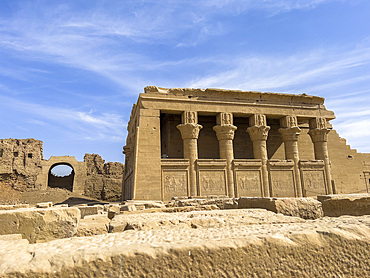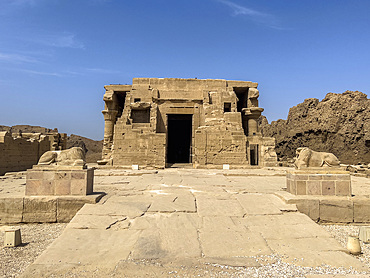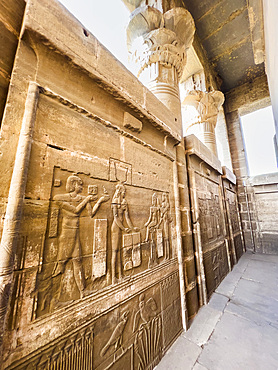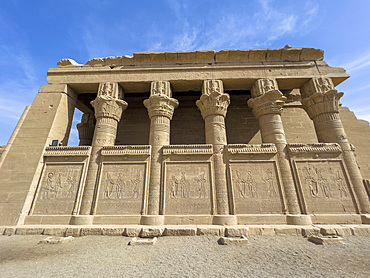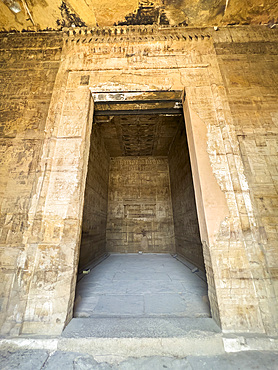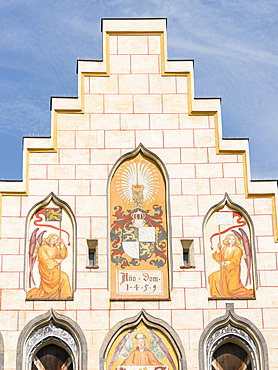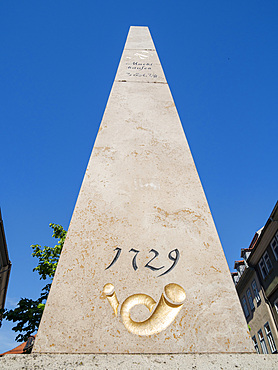Recent searches
Loading...
722-217 - Bhubaneswar, Odisha is nicknamed India?s ?City of Temples? in which around 350 are still standing, many dating back to well over one-thousand years. Shown here is an aspect of the 9th century Rameshwar Temple dedicated the Hindu deity Shiva.
722-205 - Bhubaneswar, Odisha is nicknamed India's City of Temples in which around 350 are still standing, many dating back to well over one-thousand years. Shown here is the 11th century Rajarani Temple dedicated the Hindu deity Shiva.
722-204 - Bhubaneswar, Odisha is nicknamed India's City of Temples in which around 350 are still standing, many dating back to well over one-thousand years. Shown here are aspects of the 9th century Mukteswara Temple dedicated the Hindu deity Shiva.
722-203 - Bhubaneswar, Odisha is nicknamed India's City of Temples in which around 350 are still standing, many dating back to well over one-thousand years. Shown here are aspects of the 9th century Mukteswara Temple dedicated the Hindu deity Shiva.
722-202 - Bhubaneswar, Odisha is nicknamed India's City of Temples in which around 350 are still standing, many dating back to well over one-thousand years. Shown here are aspects of the 9th century Mukteswara Temple dedicated the Hindu deity Shiva.
722-201 - Bhubaneswar, Odisha is nicknamed India's City of Temples in which around 350 are still standing, many dating back to well over one-thousand years. Shown here are aspects of the 9th century Mukteswara Temple dedicated the Hindu deity Shiva.
722-213 - Bhubaneswar, capital of the ancient, east Indian State of Odisha, previously Orissa. Here the hilltop Digambara Jain Temple which stands above the Udayagiri and Khandagiri complex of caves dating back to over 100 years BCE.
722-212 - Bhubaneswar, Odisha. Here we see examples of monks' cells cut into the hillside rock among the Udayagiri and Khandagiri caves dating back to over 100 years BCE sculptured into the hillside as religious retreats for Jain devotees.
722-210 - Bhubaneswar, Odisha. Here we see examples of monks' cells cut into the hillside rock among the Udayagiri and Khandagiri caves dating back to over 100 years BCE sculptured into the hillside as religious retreats for Jain devotees.
722-211 - Bhubaneswar, Odisha. Here we see examples of monks' cells cut into the hillside rock among the Udayagiri and Khandagiri caves dating back to over 100 years BCE sculptured into the hillside as religious retreats for Jain devotees.
722-209 - Bhubaneswar, Odisha. Here we see examples of monks' cells cut into the hillside rock among the Udayagiri and Khandagiri caves dating back to over 100 years BCE sculptured into the hillside as religious retreats for Jain devotees.
722-208 - Bhubaneswar, Odisha. Here we see examples of monks' cells cut into the hillside rock among the Udayagiri and Khandagiri caves dating back to over 100 years BCE sculptured into the hillside as religious retreats for Jain devotees.
722-207 - Bhubaneswar, Odisha. Here we see the garden at the entrance to the Udayagiri and Khandagiri caves dating back to over 100 years BCE sculptured into the hillside as religious retreats for Jain devotees.
722-206 - Bhubaneswar, Odisha. Here we see a small sanctuary near the entrance to the site of the of the Udayagiri and Khandagiri caves dating back to over 100 years BCE sculptured into the hillside as religious retreats for Jain devotees.
722-198 - Bhubaneswar, Odisha is nicknamed India's 'City of Temples' in which around 350 are still standing, many dating back to well over one-thousand years. Shown here is an aspect of the 11th century Lingaraja Temple complex dedicated the Hindu deity Shiva.
722-118 - Gate to Barrio Chino (Chinatown) with the original headquarters of the Compan?a Cubana de Telefonos dating from 1927, in the background, Central Havana, Cuba, West Indies, Central America
238-4958 - Thailand's most famous Sukhothai Walking Buddha image, with left hand in Abhaya Mudra, dating from the Sukhothai Period in the 15th century, Thailand, Southeast Asia, Asia
1373-194 - View of Castello Sforzesco (Sforza's Castle), a medieval fortification dating back to the 15th century, now housing museums and art collections, Milan, Lombardy, Italy, Europe
1373-193 - View of Castello Sforzesco (Sforza's Castle), a medieval fortification dating back to the 15th century, now housing museums and art collections, Milan, Lombardy, Italy, Europe
1373-192 - View of Castello Sforzesco (Sforza's Castle), a medieval fortification dating back to the 15th century, now housing museums and art collections, Milan, Lombardy, Italy, Europe
1373-190 - Detail of Castello Sforzesco (Sforza's Castle), a medieval fortification dating back to the 15th century, now housing museums and art collections, Milan, Lombardy, Italy, Europe
1373-191 - Detail of Castello Sforzesco (Sforza's Castle), a medieval fortification dating back to the 15th century, now housing museums and art collections, Milan, Lombardy, Italy, Europe
1373-189 - View of Castello Sforzesco (Sforza's Castle), a medieval fortification dating back to the 15th century, now housing museums and art collections, Milan, Lombardy, Italy, Europe
1373-188 - View of Castello Sforzesco (Sforza's Castle), a medieval fortification dating back to the 15th century, now housing museums and art collections, Milan, Lombardy, Italy, Europe
809-8971 - San Pietro in Valle Abbey, dating from the 7th and 13th century, Ferentillo, Umbria, Italy, Europe
1373-102 - Interior, Basilica of Corpus Domini, a Catholic church commemorating the 1453 Eucharistic Miracle during the Savoy-Dauphine conflict, with single-nave, renovated in the 18th century, and original high altar dating from 1664, Turin, Piedmont, Italy, Europe
1373-100 - Interior, Basilica of Corpus Domini, a Catholic church commemorating the 1453 Eucharistic Miracle during the Savoy-Dauphine conflict, with single-nave, renovated in the 18th century, and original high altar dating from 1664, Turin, Piedmont, Italy, Europe
1373-71 - View of the Fountains of Po and Dora in Piazza CLN, dating back to 1936 and adorned with allegorical sculptures, standing as neorationalistic symbols in architect Marcello Piacentini's vision for Via Roma's redevelopment, Turin, Piedmont, Italy, Europe
801-3653 - Interior, created by the Asam Brothers, Asam Kirche (Church), dating from 1733, Munich, Bavaria, Germany, Europe
801-3652 - Frauenkirche Cathedral, dating from 1468, Old Town, Munich, Bavaria, Germany, Europe
801-3642 - Well, dating from the 15th century, Motovun, Central Istria, Croatia, Europe
801-3639 - Main City Gate, dating from 14th century, Lion sculpture above, Motovun, Central Istria, Croatia, Europe
801-3637 - Marina Gate, Belvedere Historical Site, dating from 1649, Old Town, Novigrad, Croatia, Europe
801-3635 - Belvedere Historical Site, dating from 1649, Old Town, Novigrad, Croatia, Europe
801-3633 - Belvedere Historical Site, dating from 1649, Old Town, Novigrad, Croatia, Europe
801-3631 - Belvedere Historical Site, dating from 1649, Old Town, Novigrad, Croatia, Europe
801-3630 - Belvedere Historical Site, dating from 1649, Old Town, Novigrad, Croatia, Europe
801-3629 - Belvedere Historical Site, dating from 1649, Old Town, Novigrad, Croatia, Europe
801-3625 - Waterfront and Belvedere Historical Site, dating from 1649, Old Town, Novigrad, Croatia, Europe
801-3586 - Sculptures, House of Two Saints, dating from the 15th century, Old Town, Porec, Croatia, Europe
801-3579 - Mosaic of angels, Euphrasian Basilica, dating from the 6th century, UNESCO World Heritage Site, Porec, Croatia, Europe
801-3578 - Mosaic, Mary Holding Jesus in center) Euphrasian Basilica, dating from the 6th century, UNESCO World Heritage Site, Porec, Croatia, Europe
801-3555 - Balbi's Arch, dating from 1678, Old Town, Rovinj, Croatia, Europe
801-3525 - City Hall Building (Communal Palace), dating from 1296, Temple of Augustus on the left, from 2 AD, Forum Square, Old Town, Pula, Croatia, Europe
801-3523 - City Hall Building (Communal Palace), dating from 1296, Forum Square, Old Town, Pula, Croatia, Europe
801-3513 - Basilica of Santa Maria del Canneto dating from the 6th century, Pula, Croatia, Europe
801-3510 - Clock Tower and Cathedral of the Assumption of the Blessed Virgin Mary dating from the 4th century, Pula, Croatia, Europe
801-3508 - Cathedral of the Assumption of the Blessed Virgin Mary, dating from the 4th century, Pula, Croatia, Europe
1358-255 - Castlerigg Stone Circle, dating from the Neolithic era, around 3000 BC, near Keswick, Lake District National Park, UNESCO World Heritage Site, Cumbria, England, United Kingdom, Europe
1358-237 - St. Peter's Church, the oldest Anglican Church still in use outside Britain, dating back to the 17th century, St. George's, UNESCO World Heritage Site, Bermuda, Atlantic, North America
1178-44241 - Smiling couple enjoying dinner at home
1112-7792 - The Roman mammisi, dating to the reigns of Trajan and Marcus Aurelius, Dendera Temple complex, Dendera, Egypt, North Africa, Africa
1112-7790 - Interior of the Roman mammisi, dating to the reigns of Trajan and Marcus Aurelius, Dendera Temple complex, Dendera, Egypt, North Africa, Africa
1112-7783 - Interior of the Roman mammisi, dating to the reigns of Trajan and Marcus Aurelius, Dendera Temple complex, Dendera, Egypt, North Africa, Africa
1112-7781 - The Roman mammisi, dating to the reigns of Trajan and Marcus Aurelius, Dendera Temple complex, Dendera, Egypt, North Africa, Africa
1112-7780 - The Roman mammisi, dating to the reigns of Trajan and Marcus Aurelius, Dendera Temple complex, Dendera, Egypt, North Africa, Africa
1112-7774 - The Roman mammisi, dating to the reigns of Trajan and Marcus Aurelius, Dendera Temple complex, Dendera, Egypt, North Africa, Africa
1112-7772 - The Roman mammisi, dating to the reigns of Trajan and Marcus Aurelius, Dendera Temple complex, Dendera, Egypt, North Africa, Africa
1112-7768 - Interior of the Roman mammisi, dating to the reigns of Trajan and Marcus Aurelius, Dendera Temple complex, Dendera, Egypt, North Africa, Africa
832-401361 - The Neolithic Castlerigg Stone Circle dating from around 3000 BC, near Keswick, Lake District National Park, UNESCO World Heritage Site, Cumbria, England, United Kingdom, Europe
832-401362 - The Neolithic Castlerigg Stone Circle dating from around 3000 BC, near Keswick, Lake District National Park, UNESCO World Heritage Site, Cumbria, England, United Kingdom, Europe
826-772 - The octagonal Market Cross (Butter Market) (Break's Folley), a Grade I Listed Building built by Thomas Breaks, dating from 1747, Barnard Castle, County Durham, England, United Kingdom, Europe
826-773 - The octagonal Market Cross (Butter Market) (Break's Folley), a Grade I Listed Building built by Thomas Breaks, dating from 1747, Barnard Castle, County Durham, England, United Kingdom, Europe
1112-7652 - Step Pyramid of Djoser, dating from circa 2700 BC, part of the Memphite Necropolis, UNESCO World Heritage Site, Egypt, North Africa Africa
1311-662 - The historic Walker Charcoal Kiln, dating from the late 1880s used to turn oak wood into charcoal for silver smelters, Prescott National Forest, just south of Prescott, Arizona, United States of America, North America
1358-157 - The Neolithic Castlerigg Stone Circle dating from around 3000 BC, near Keswick, Lake District National Park, UNESCO World Heritage Site, Cumbria, England, United Kingdom, Europe
1358-156 - The Neolithic Castlerigg Stone Circle dating from around 3000 BC, near Keswick, Lake District National Park, UNESCO World Heritage Site, Cumbria, England, United Kingdom, Europe
1358-155 - The Neolithic Castlerigg Stone Circle dating from around 3000 BC, near Keswick, Lake District National Park, UNESCO World Heritage Site, Cumbria, England, United Kingdom, Europe
801-3159 - Interior, Suleymaniye Mosque, dating from 1550, UNESCO World Heritage Site, Istanbul, Turkey, Europe
801-3158 - New Mosque (New Valide Sultan Mosque), dating from 1660, Istanbul, Turkey, Europe
801-3154 - Evening, Suleymaniye Mosque, dating from 1550, UNESCO World Heritage Site, Istanbul, Turkey, Europe
801-3157 - Suleymaniye Mosque, dating from 1550, UNESCO World Heritage Site, Istanbul, Turkey, Europe
801-3160 - Interior, Suleymaniye Mosque, dating from 1550, UNESCO World Heritage Site, Istanbul, Turkey, Europe
801-3156 - Blue Mosque (Sultan Ahmed Mosque), dating from 1609, UNESCO World Heritage Site, Istanbul, Turkey, Europe
747-1999 - Sizergh Castle, dating from circa 1239, Helsington, South Kendal, Cumbria, England, United Kingdom, Europe
746-91819 - Rua Banana with traditional houses dating back to the founding of the town in the 15th century. Cidade Velha, historic center of Ribeira Grande, listed as UNESCO world heritage. Island of Santiago (Ilha de Santiago), Islands of Cape Verde in the equatorial Atlantic.
746-91090 - King Penguin (Aptenodytes patagonicus) on the island of South Georgia, the rookery in St. Andrews Bay. Courtship behaviour. Antarctica, Subantarctica, South Georgia
746-91501 - Karakhanid mausoleum dating back to the 12th century. City Uzgen (Oesgoen, Usgen) close to the border to Uzbekistan. Asia, central Asia, Kyrgyzstan
746-91820 - Rua Banana with traditional houses dating back to the founding of the town in the 15th century. Cidade Velha, historic center of Ribeira Grande, listed as UNESCO world heritage. Island of Santiago (Ilha de Santiago), Islands of Cape Verde in the equatorial Atlantic.
746-91291 - Facade of historic town hall with typical stepped gable dating back to late gothic The medieval old town of Wasserburg am Inn in the Chiemgau region of Upper Bavaria, Europe, Germany, Bavaria
746-91500 - Karakhanid mausoleum dating back to the 12th century. City Uzgen (Oesgoen, Usgen) close to the border to Uzbekistan. Asia, central Asia, Kyrgyzstan
746-91499 - Karakhanid mausoleum dating back to the 12th century. City Uzgen (Oesgoen, Usgen) close to the border to Uzbekistan. Asia, central Asia, Kyrgyzstan
746-91290 - Facade of historic town hall with typical stepped gable dating back to late gothic The medieval old town of Wasserburg am Inn in the Chiemgau region of Upper Bavaria, Europe, Germany, Bavaria
746-91830 - Tribunal de Justica. Traditional houses dating back to colonial times in Plato, Street Dr. Julio Abreu, The capital Praia on the island of Santiago (Ilha de Santiago), Cape Verde in the equatorial atlantic.
746-91701 - Milestone (Kursaechsische Ganzmeilensaeule) dating back to the Electorate of Saxony, Replica. The medieval town and spa Bad Langensalza in Thuringia. Europe, Central Europe, Germany
1242-495 - Berze Castle (Forteresse de Berze) the largest fortress in southern Burgundy dating from between 11th and 14th centuries, Berze-le-Chatel, Saone-et-Loire, Burgundy, France, Europe
1242-485 - The Romanesque Basilica of the Sacred Heart of Paray-le-Monial dating from the 12th to 14th centuries, Paray le Monial, Saone-et-Loire, Burgundy, France, Europe
1242-481 - Chateau dating from between 14th and 19th centuries, of the town of La Clayette, Saone-et-Loire, in southern Burgundy, France, Europe
1242-496 - Berze Castle (Forteresse de Berze) the largest fortress in southern Burgundy dating from between 11th and 14th centuries, Berze-le-Chatel, Saone-et-Loire, Burgundy, France, Europe
1242-482 - Chateau dating from between 14th and 19th centuries, of the town of La Clayette, Saone-et-Loire, in southern Burgundy, France, Europe
1242-483 - Chateau dating from between 14th and 19th centuries, of the town of La Clayette, Saone-et-Loire, in southern Burgundy, France, Europe
1242-480 - Chateau dating from between 14th and 19th centuries, of the town of La Clayette, Saone-et-Loire, in southern Burgundy, France, Europe
746-90031 - The Ponte dei Saraceni or Carcaci is a stone bridge probably dating back to the Roman period, rebuilt and modified over time on the Simeto river; Adrano, Sicily, Italy, Europe
746-90057 - The Ponte dei Saraceni or Carcaci is a stone bridge probably dating back to the Roman period and rebuilt and modified in the 12th century over the Simeto river, Sicily, Adrano, Catania, Italy, Europe
1178-32822 - Young coupled dressed up walking down hotel hallway with dog

















